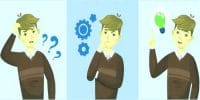Science is fantastic. It’s what got us from dying from plague all the time in the middle Ages to only acquiring it extremely seldom in the current world (and treating it with antibiotics if we do). But science isn’t all-knowing, and some of the mysteries it can’t solve are almost humiliating. So, here are six acts you’ve probably likely done in your daily life that, in some way, contradict science.
Acetaminophen (Acetaminophen) (aka Paracetamol), Acetaminophen, often known as Tylenol or paracetamol outside the United States, is such a common pain medication that you’ve probably never thought about how it works. This is fortunate because no one knows. “Although the analgesic effect of acetaminophen is widely recognized, the location and manner of action have not been thoroughly explored,” reads the physicians’ note that accompanies with the tablets.
To put it another way, we know it works, but we have no idea how or why. However, there are several theories – the most popular one you’ll hear from a doctor is that it blocks prostaglandins, the chemical messengers in the brain that alerts us to pain. There is also evidence that paracetamol has an effect on our serotonin levels. While serotonin is most frequently thought of as a “happy hormone” that regulates mood disorders and makes us feel less nervous and sad, it actually plays a variety of roles. Sleep, body heat regulation, sex, and, yes, pain are among them.
However, if serotonin is the secret to acetaminophen’s effectiveness, it might raise more concerns than it answers. The function of serotonin in pain is convoluted, and while antidepressants are occasionally prescribed for chronic pain, it’s yet another prescription that, while it appears to help, we don’t fully understand how – and that’s because…
Almost any antidepressant drug, have you been informed of the wonderful news? Our parents’ favorite party drug, ketamine, has proven out to be somewhat of a miraculous therapy for depression, demonstrating that not all horse drugs are evil. How does it function? According to experts, it suppresses glutamate release. It has something to do with serotonin, though.
Is ketamine capable of restoring synapses and neurons that have been destroyed due to depression? Is it even the ketamine itself — perhaps it’s what our bodies make it into? Maybe none of those explanations apply, or maybe all of them apply. As you might expect, the specific mechanism by which ketamine heals depression is still under discussion. That’s understandable, given that it’s hardly a first-line therapy. But, as it turns out, even professionals don’t fully understand most of our standard therapies for depression – or even depression itself.
According to WebMD, “a lot of what we think about antidepressants is still theoretical.” “We don’t know if low levels of serotonin or other neurotransmitters ’cause’ depression or if increasing those levels would make it go away.” We don’t know enough about brain chemistry to tell if something is ‘balanced’ or not. “It’s likely that antidepressants have additional undiscovered effects, and that their advantages are due to actions other than neurotransmitter levels, such as modulating genes that affect nerve cell development and function.”
Even the oldest depression drug, lithium, which has been used as a mood stabilizer and soft drink addition for over 150 years, potentially as long as 1,600, follows this trend. “Researchers think lithium works in the brain to enhance the amounts of certain neurotransmitters, including serotonin,” writes Kevin Le, a pharmacist with GoodRx Health. “Despite its age, lithium is one of the most effective medications for treating bipolar disease,” he said. “As a result, despite its hazards, side effects, and drug interactions, it remains a first-choice medicine.”















